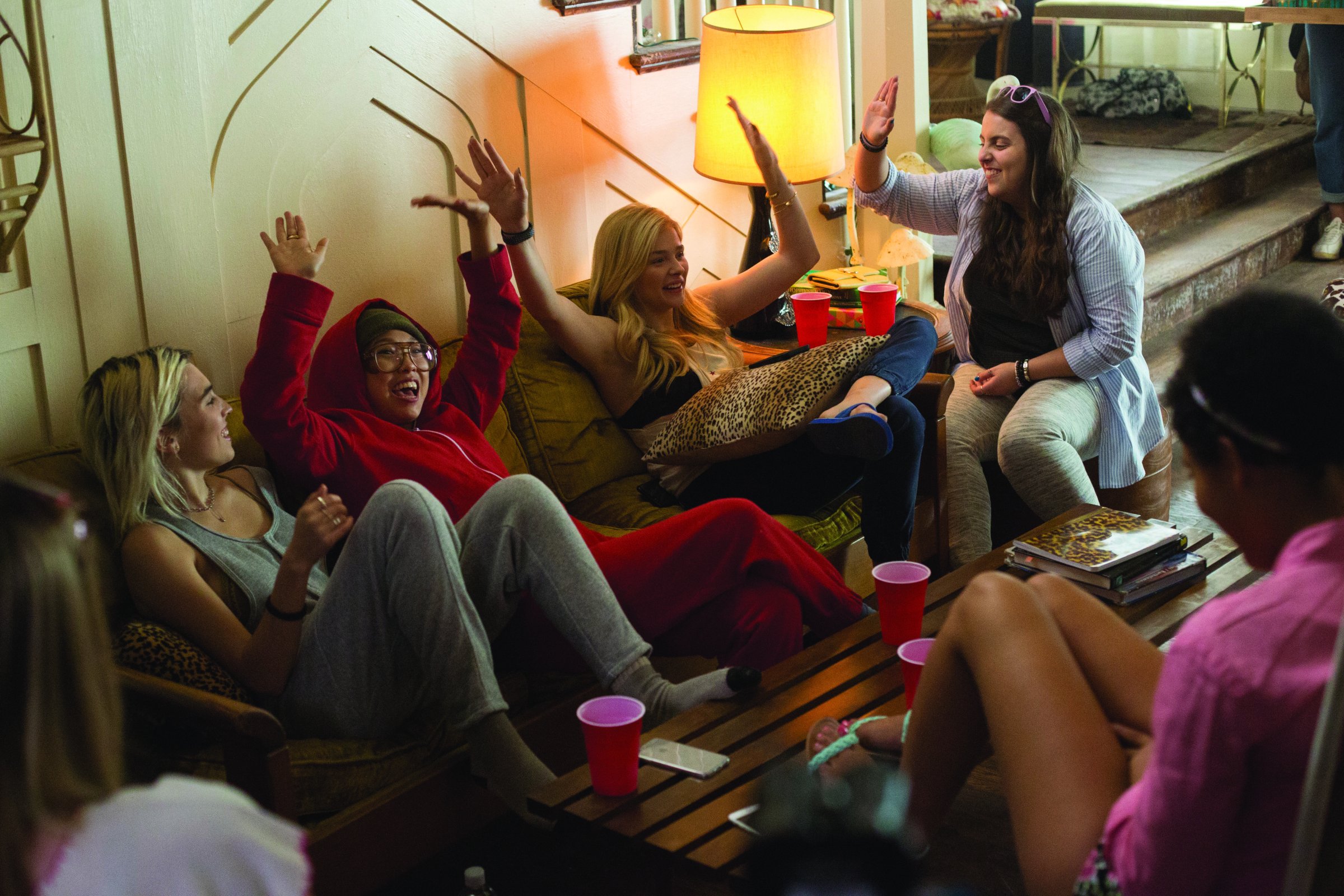
The order of the movies in the Neighbors franchise is historically appropriate: the frat-centric 2014 original predates the Sorority Rising sequel, just as fraternities came before sororities. The first American Greek-letter fraternity, Phi Beta Kappa, was founded in 1776, and the early 19th century saw the spread of fraternities throughout the nation’s higher-education system. About a century would pass before sororities came on the scene.
And, though the movie’s sorority story may be party-centric, the real origins of such societies have more to do with the Civil War and sexism.
Early fraternities were often shrouded in secrecy, but the reason they came before sororities is no mystery. Without women in college, there could be no college groups for them. And as Diana B. Turk explains in Bound by a Mighty Vow: Sisterhood and Women’s Fraternities, 1870-1920, even in 1870—nearly 40 years after Oberlin became the nation’s first coeducational college—there were about five times as many men in American colleges and universities than there were women, and most schools didn’t allow women to attend.
Get your history fix in one place: sign up for the weekly TIME History newsletter
There are a couple of different sororities that lay claim to being first in some way. Alpha Delta Pi, founded in 1851 as the Adelphean Society, touts itself as the first secret society for women; Pi Beta Phi, founded in 1867 as I.C. Sorosis, calls itself the first national group to be “patterned after men’s groups,” with multiple chapters. (Pi Beta Phi also boasts the first sorority woman to be First Lady, Grace Coolidge, who was a charter member at the University of Vermont, where she was in the class of 1902.) Kappa Alpha Theta, founded in 1870, was the first to use Greek letters. Gamma Phi Beta, founded in 1874, was the first to be called a sorority, rather than a women’s fraternity, with the word coined in 1882 by a Syracuse University professor.
No matter which “first” is in question, however, these sororities all share an important element: they were all founded within a couple of decades. So what was going on back then?
MORE: The Space Sorority
Though the Adelphean Society was created a decade earlier, 1862 was when the Morrill Act first created land-grant colleges, leading to a boom in new institutes of higher learning. Though most were open only to men, coeducation expanded too—especially after the Civil War, a time during which the nation’s young men were diverted from the classroom to the battlefield.
Again, it’s a matter of numbers. By the postbellum period, there were enough women at some schools that they wanted to start clubs, and enough with very specific needs. Turk writes that the women who chose to pursue higher education at that time were often “isolated and denigrated” even at the institutions that did choose to allow women through their gates. Peers and professors alike tended to see their academic capabilities as inferior, and the coed nature of their schools often did not extend to social clubs. (By Turk’s count, at that point a typical coed campus offered eight times more male-only clubs than clubs open to women.) Women had a mission to prove that they could hack it, and needed support from one another, academically and socially, in order to make sure that happened. Hence, clubs for women.
The number of sororities multiplied around the turn of the century, as Barbara J. Bank demonstrates in Gender and Higher Education, as the number of women interested in joining began to exceed the spots in existing organizations. And as the diversity among college students expanded beyond coeducation to include race and religion, sororities sprang up for those women too.
Though the mission of sororities has evolved over the years—they no longer have to convince the world that women belong in college—in at least one way sororities are still catching up to fraternities. As the Washington Post has explained, the Neighbors 2 plot point about the difficulty sororities have throwing parties is true too: though fraternities are famous for their parties, the council that controls the nation’s main sororities still bars members from drinking in sorority houses.
More Must-Reads from TIME
- Donald Trump Is TIME's 2024 Person of the Year
- Why We Chose Trump as Person of the Year
- Is Intermittent Fasting Good or Bad for You?
- The 100 Must-Read Books of 2024
- The 20 Best Christmas TV Episodes
- Column: If Optimism Feels Ridiculous Now, Try Hope
- The Future of Climate Action Is Trade Policy
- Merle Bombardieri Is Helping People Make the Baby Decision
Write to Lily Rothman at lily.rothman@time.com